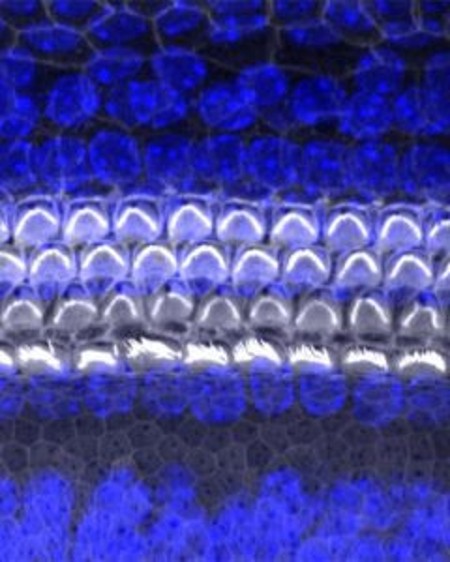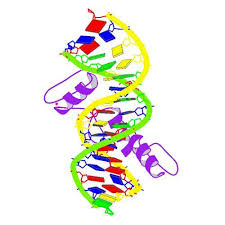At the University of Maryland School of Medicine, researchers have discovered the role of a critical protein associated with hearing. The lining of our middle and inner ear is covered by hair cells that are vital to transmitting sound waves. These hair cells owe their development to a protein identified as GFI1, responsible for the maturing of embryonic cells (seen in the image above) into fully functioning adult hair cells. If the hair cells do not develop properly we lose our hearing.
The GFI1 protein, the GF stands for growth factor, seen in the image above, is described in the literature as a transcriptional repressor protein that plays a role in the development of stem cells, sensory neurons, neuroendocrine cells, and more. Mutations in the genes that express the protein have been associated with small-cell lung cancer and neuroendocrine tumors. The discovery of its role in the development of embryonic auditory hair cells represents a significant advance in our understanding of how hearing develops.
But the protein alone isn’t the only factor that can impact hearing. Environmental damage such as exposure to loud noises (those rock concerts you may have attended in your misguided youth where you experienced buzzing and ringing for days after), working in noisy industrial environments, and diseases of the nervous system can also lead to hearing loss. Today in the United States hearing loss doubles in 10-year increments with 50% of American adults at age 70 suffering from it, and 85% in those over age 85.
In my case, I developed tinnitus, a condition where I experience ringing and other high-pitched noises in my ears. The tinnitus is part of my diminished hearing capacity. It is uneven with my left ear worse than the right. The sound doesn’t come from an external source. Instead, it is malfunctioning hair cells in my middle and inner ear that are contributing factors. As a musician, the presence of this noise can be a real pain. But I have learned to live with it on most days when it is in the background. But on some days it becomes significant and bothersome. I’m not alone with this condition which affects 15 to 20% of people, mostly seniors, and have been tested for hearing loss on multiple occasions. So far, I don’t need a hearing aid.
In the Maryland study that identified the protein and its role, they used genetically modified newborn mice which lacked it. Ronna Hertzano, Associate Professor in the Department of Otorhinolaryngology-Head and Neck Surgery in Maryland, in a SciTech Daily article describes the influence of the genes responsible for the GFI1 protein. The altered mice were unable to produce GFI1. The result was the inability to develop the sensory hair cells.
The study also showed an exciting discovery, that GFI1 had regenerative capabilities and could be used for patients experiencing hearing loss from aging or environmental factors. The result is new research underway to use the protein with stem cells to create a potential cure for hearing loss from the damages caused to hair cells.
If you would like to read the original research paper, it is published in Development for advances in developmental biology and stem cells.










